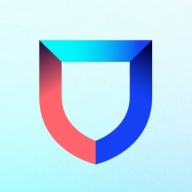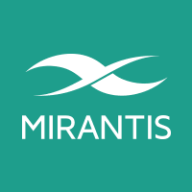

Mirantis Container Cloud and Lacework FortiCNAPP are products competing in container management and cloud-native application protection. Mirantis Container Cloud has a slight advantage due to favorable pricing and strong customer support, whereas Lacework FortiCNAPP is compelling due to its robust features.
Features: Mirantis Container Cloud provides robust container management with seamless integration, scalability, and comprehensive monitoring. Lacework FortiCNAPP emphasizes cloud-native application security, offering deep insights into vulnerabilities, compliance automation, and threat detection.
Room for Improvement: Mirantis Container Cloud could enhance its security analytics, improve its learning resources, and expand third-party integrations. Lacework FortiCNAPP needs to simplify its initial setup, refine its user interface, and lower alert noise for easier management.
Ease of Deployment and Customer Service: Mirantis Container Cloud focuses on ease of deployment with strong customer support to minimize setup issues. Lacework FortiCNAPP offers detailed guidance, with a complex deployment process, leveraging security expertise to reduce reluctance.
Pricing and ROI: Mirantis Container Cloud offers a competitively lower setup cost and promotes ROI through efficient resource utilization. Lacework FortiCNAPP has higher upfront costs but promises substantial ROI due to its comprehensive security measures.


Lacework FortiCNAPP provides robust cloud security, combining vulnerability management and multi-cloud insight with user-friendly controls, machine learning detection, and compliance support.
Lacework FortiCNAPP specializes in cloud security by merging machine learning anomaly detection with agent-based vulnerability management to offer detailed alerts and compliance reports. Its comprehensive approach allows continuous monitoring across AWS and Kubernetes, providing insights from an attacker's perspective. The platform offers automation and seamless Slack integration, facilitating collaborative and efficient cloud security management. Users value its ability to handle multi-cloud environments and scan IAC scripts, configurations, and compute nodes across AWS and GCP.
What are the key features?Organizations across sectors leverage Lacework FortiCNAPP for cloud security, focusing on compliance, security posture, and vulnerability management. It is widely used for monitoring AWS and Kubernetes environments, scanning IAC scripts, configurations, and securing compute nodes. It supports multi-cloud security posture management and log ingestion, enabling companies to maintain strong cloud infrastructures without dedicated security layers.
Mirantis Container Cloud is a secure container platform for any cloud. It provides organizations with unmatched speed to ship code quicker on public clouds and on-premise infrastructure. Mirantis Container Cloud is the simplest method for building and managing Kubernetes clusters anywhere with one consistent cloud experience for developers and operators across public and private clouds. It enables full application and DevOps portability.
Mirantis Container Cloud simplifies infrastructure management by allowing you to deploy clusters anywhere on demand with one reliable connection, minimizing operational costs and increasing developer productivity. Mirantis Container Cloud is a clear solution for the world's most regulated businesses, with end-to-end security enabled by default and the highest level of FIPS 140-2 and DISA STIG compliance. Developers can quickly ship code by creating, monitoring, and managing their own Kubernetes clusters within pre-established boundaries using the self-service portal.
Mirantis Container Cloud Features
Mirantis Container Cloud has many valuable key features. Some of the most useful ones include:
Reviews from Real Users
Mirantis Container Cloud stands out among its competitors for a number of reasons. Two major ones are its deployment of images and the portability of its containers. PeerSpot users take note of the advantages of these features in their reviews:
Cristina C., Test Architect at a tech services company, writes of the solution, “The idea that you can configure an image, deploy it, and it can be reused and redeployed with the same setup over and over again is a valuable feature.
A DevOps Engineer at a tech services company, notes, “I like that Mirantis’ main products of containers are very portable. Any possible issues, problems, or troubles are fixed with improvements of the platform itself. Any constraints that Mirantis [has], have been fixed with other products or features that Mirantis provides.”
We monitor all Container Security reviews to prevent fraudulent reviews and keep review quality high. We do not post reviews by company employees or direct competitors. We validate each review for authenticity via cross-reference with LinkedIn, and personal follow-up with the reviewer when necessary.